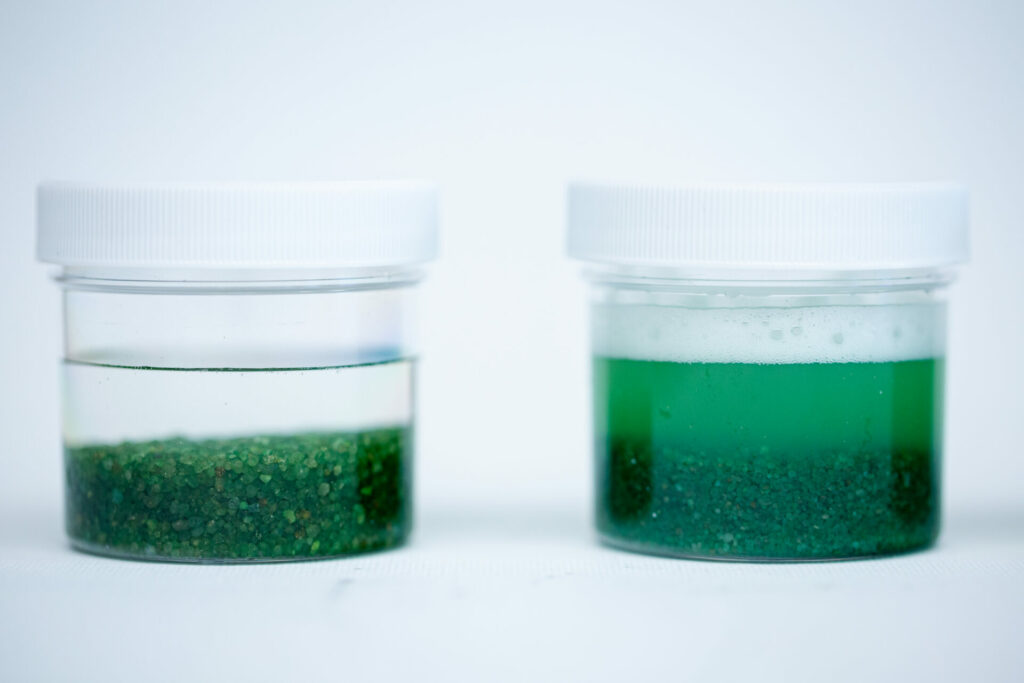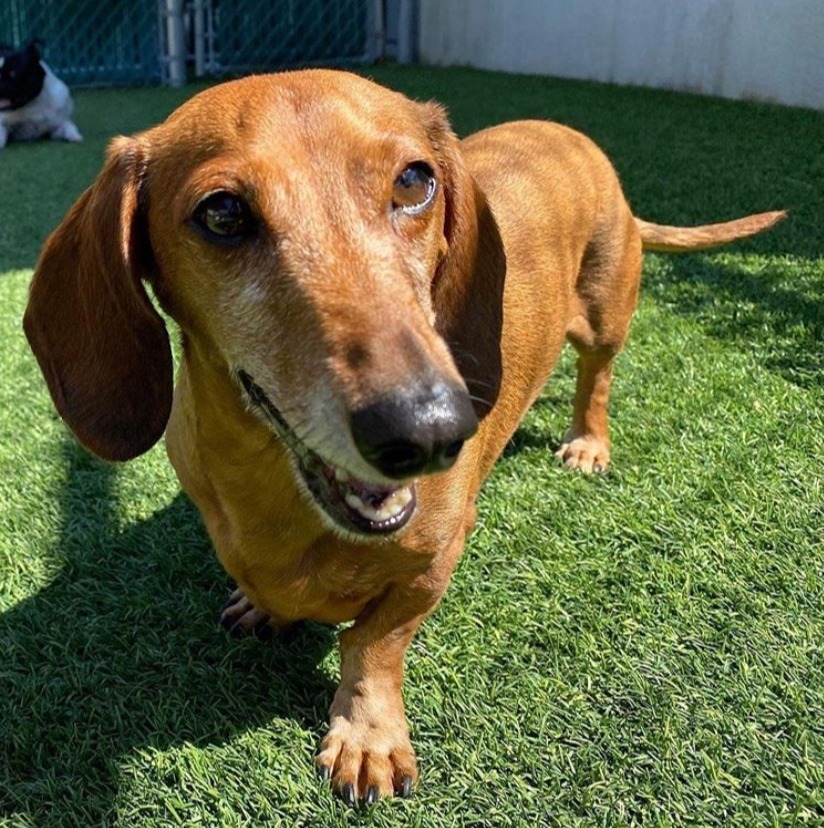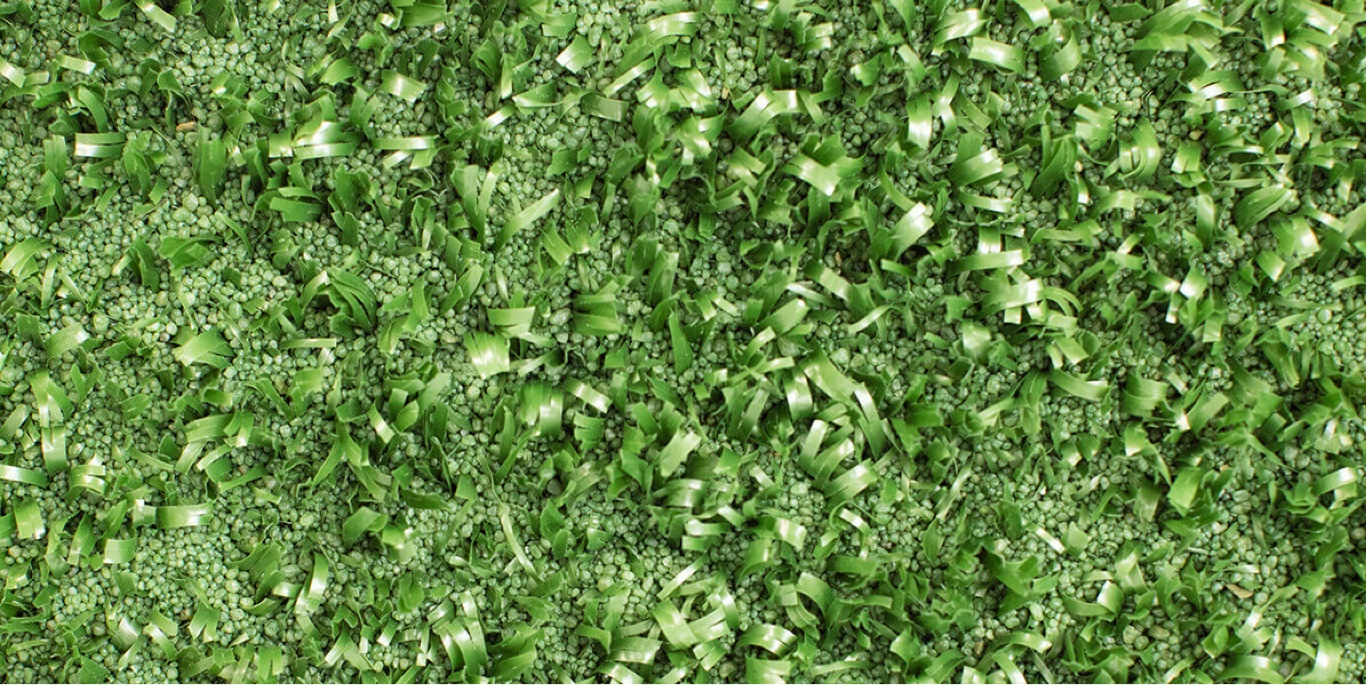
Infill Landscape Blog
The Ultimate Guide to Protecting Your Home’s Artificial Turf in the Winter
You’ve made a smart choice by deciding to install artificial turf in your backyard. It’s low maintenance, environmentally friendly, and, most of all, safe for your kids! But winter’s around the corner, and along with it, ice and snow. What does this mean for your lawn or your kids’ playground? How do you protect it? How do you ensure your family’s beloved outdoor spaces will continue to be safe and enjoyable?
Fortunately, unlike natural grass, synthetic turf is relatively fuss-free. We’ve put together this guide to protecting your artificial turf before and during the winter to ensure it remains safe, hygienic, and looking great for the whole season. In this blog, we cover:
- 4 steps to protect your turf before winter begins
- How to clean your synthetic turf
- Winter artificial turf care for dogs
- How to keep your playground safe during the winter
4 Steps To Protect Artificial Turf Before Winter Begins
As with any challenge, facing the winter prepared and proactive is the best way to win. Getting your turf ready for snowy weather begins in autumn when Mother Nature starts preparing for colder weather. Here are some things you can do to ensure your peace of mind throughout the season:
- Put together a winter turf maintenance kit: Keep a couple of tools handy for minor maintenance work. Even if you don’t need to remove the snow from your artificial turf, you might like, from time to time, to clear a path for walking or make an area accessible to your dogs to do their business. Here’s what you’ll want to have on hand:
- A plastic snow shovel to clear snow (do not use metal shovels or tools)
- A leaf blower or snow blower
- A soft bristle broom
- Spare towels and/or blankets
- Clean your turf thoroughly: The average mature tree has between 100,000-200,000 leaves, with some oaks having up to 1,000,000. So, you can imagine how many leaves you can expect to rake throughout the autumn. Use a rake, brush, or leaf blower to clear the turf surface of leaves, twigs, and organic matter to prevent stains or damage during the winter. Use a weed and moss killer, or manually remove any growth if you need to.
- Check for damage: Inspect your artificial turf lawn for loose seams, tears, or worn areas. Ensure that the drainage system is free from blockages and that there is enough infill distributed evenly across the turf to keep it stable. If there is any maintenance or repair work required, call a professional to help before the winter sets in.
- Cover your synthetic turf: If you don’t plan to use the lawn during the winter, it might be a good idea to lay a tarp, snow blanket, or any other type of sheet over it. Professionals consider this the surest way to winter-proof your turf.
- Consider changing your artificial turf infill: Most synthetic turf infill materials perform poorly in wet conditions. For example, raw sand infill compacts and hardens when continuously oversaturated with water (which could come from melting ice and snow), and crumb rubber loosens up and disperses easily with snow removal. Envirofill® performs far better as the shape of the coated sand particles makes for quicker and cleaner drainage.
How To Clean Your Artificial Turf During The Winter
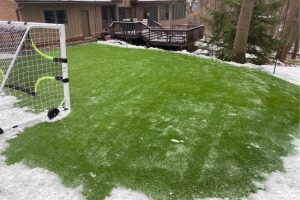
One of the great benefits of artificial turf is how well it holds up in the winter, but there are a few things to be aware of. The moisture, ice formation, and heaviness of snow tend to weigh down artificial turf systems, clog up the drainage, and create the perfect conditions for bacteria to thrive. Fortunately, there’s not a lot of work you need to do. Just make sure that after a snowfall, you remember to:
- Allow snow and ice to melt away naturally: Allow snow and ice to melt naturally and drain away to avoid damaging the artificial turf. If removing the snow is absolutely necessary, use a plastic shovel or a leaf blower to avoid scratching or tearing the fibers. If temperatures are below freezing, you can also place towels warmed in the dryer on the snow to help it melt.
- Check the drainage: Inspect the synthetic turf’s drainage system to make sure that it’s free of debris, waterlogging, and ice formation. If the turf feels compacted, use a power broom or a stiff brush to lift the turf fibers and loosen the infill to encourage water flow. Minor issues can be resolved by spraying a mixture of water and white vinegar (1:3) over the turf. This solution can help break down minor buildups and kill any mildew or bacteria.
- Brush turf fibers regularly: Snow can lay heavily on artificial turf fibers, flattening the blades and in some cases, matting them. Use a soft-bristled brush or broom and gently brush the turf in different directions to ensure the fibers are lifted evenly. Use light pressure to prevent damage in case the blades are stiff. This also serves the purpose of cleaning off any debris that may be stuck between the fibers.
Winter Artificial Turf Care For Dogs
Artificial turf fibers, unlike grass blades, do not have any water content, so the surface doesn’t become slippery and unsafe the way natural grass does. However, in the winter, ice and snow can still sit on top of the turf blades, making it tough for your pets to use. Some people use deicing chemicals to combat this problem – avoid this as much as possible, because these substances can be harmful to pets. Salt, commonly used for melting ice, can also irritate their paws and lead to other health issues if ingested.
If your pets are used to relieving themselves on your turf lawn, there is the additional task of cleaning it to deal with odors, stains, and bacterial buildup. If you’re using an antimicrobial infill like Envirofill, the bacteria causing these unpleasant issues will be prevented from growing, and the need for maintenance is greatly reduced.
Either way, restrict the areas your pets are allowed to use to make the cleaning process simpler. You will need to hose down the area and use enzymatic cleaners as you usually do, but in the winters, be sure to use lukewarm water and do this during the warmer parts of the day so the water can drain quickly.
Keeping Playgrounds Safe During The Winter
If you have children, you’ve already made the right choice by choosing artificial turf for their playground. As little ones know no season when wanting to play outside, you’ll need to step up the same cleaning and maintenance routines we mentioned above so you can keep their play areas safe and clean.
Since winter (and the moisture and dampness it brings) is so conducive to bacterial buildup, you might want to consider switching your infill to Envirofill. Infused with Microban® antimicrobial protection, it prevents the growth of bacteria and microbes that can cause stains, odors, and product deterioration. It’s resilient and soft enough to meet critical fall height standards, so your kids are less likely to injure themselves while playing. It’s non-toxic and allergen-free, won’t cling to clothing, and is California Proposition 65 compliant. All in all, a great infill choice for your children’s playground.
Keep Your Turf In Top Shape With Motz
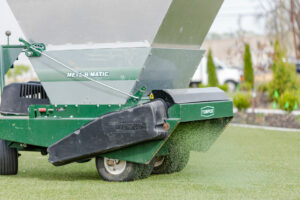
With artificial turf, you’ll rarely, if ever, have to stress about keeping it looking great. Rain or shine, the right infill can go a long way in maintaining the look and function of synthetic turf lawns. Designed for low upkeep and optimal drainage, Envirofill facilitates rapid melting snow runoff and minimizes infill displacement with water flow.
If you’re preparing for winter or planning to switch infills, contact our team.
Yes, it absolutely can! Just make sure that the artificial turf is completely dry before laying down infill, so it doesn’t clump on turf fibers. Turf adhesive tape can also take a bit longer to cure in cold weather, so we recommend waiting about 24 hours for the turf to set after installation.
Read more in our guide to installing artificial turf in the winter.
High-quality artificial turf should hold up well against snow and hail. However, frost can cause the artificial grass blades to become stiff and brittle, so it’s best to allow frost and snow to melt and drain naturally before using the lawn for any purpose.
Similar Blogs

